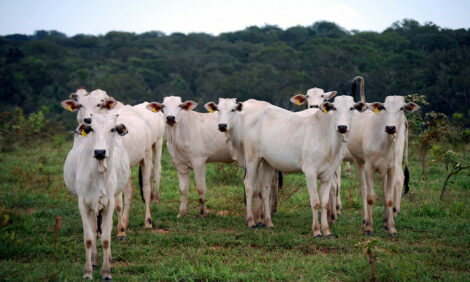



Russia Releases 2013 Import Regime
RUSSIA - Russia has released its tariff rate quota import regime for 2013, with the volumes of quota available for 2013 announced.
Meat and Livestock Australia said that while the quota duties, or tariff rates, are yet to be officially released, it is expected that they will remain similar to those outlined in Russia’s WTO agreement.
The overall quota for frozen beef remains unchanged for 2013, at 530,000 tonnes.
MLA said that Australia has access to 407,000 tonnes of this frozen quota, shared with other WTO countries, while the US (60,000 tonnes), the EU (60,000 tonnes) and Costa-Rica (3,000 tonnes) all have separate access to the frozen quota.
The majority of Australian beef exports to Russia are frozen, with 97 per cent of shipments year-to-date frozen product.
The quota for chilled beef is set to increase in 2013, from 30,000 tonnes to 40,000 tonnes.
The EU has access to 29,000 tonnes of this chilled quota, while access for other countries is set to increase from 1,000 tonnes to 11,000 tonnes.
This will provide increased access for Australian chilled beef into the Russian market. Currently, chilled beef shipped to Russia outside of this quota and not classified as ‘High Quality Beef’, attract a 50 per cent tariff.
High quality beef, currently defined as any beef entering Russia at greater than €8/kg, attracts a 15 per cent tariff, with most Australian chilled product entering under this arrangement.
Australian beef exports to Russia throughout 2012 have been sluggish when compared to 2011, back 40 per cent year-on-year at the end of October, totalling 29,938 tonnes swt.
Contributing to the slowdown in shipments has been strong demand for Australian manufacturing product (traditionally Australia’s highest volume export to Russia) from the US and China.
A significant devaluation in the Brazilian currency, combined with cheap product coming out of Paraguay has also made it difficult for Australian product to compete on price in the Russian market.
Chilled Beef Exports to Russia Strong
MLA reports that Australian chilled beef exports to Russia throughout 2012 have been strong, in what has been an otherwise subdued market for Australian beef.
Exports of Australian beef (chilled and frozen) for the first 11 months of 2012 to Russia were down 39 per cent year-on-year totalling 30,989 tonnes swt.
However, Australian chilled beef exports to Russia in November totalled 121 tonnes, up 33 per cent when compared year-on-year, while chilled shipments for 2012 are up 13 per cent when compared to 2011, totalling 996 tonnes swt.
The vast majority of beef shipments to Russia are frozen (97 per cent in 2012), with Australian beef largely used for further processing. However, exchange rate movements in Brazil, cheap product coming out of Paraguay and strong prices for Australian manufacturing beef in other markets have all contributed to reduce the price competitiveness of Australian frozen beef in Russia.
High quality chilled beef, mostly going into high end steakhouses, has largely avoided the competitiveness issues associated with frozen beef. Exports of cube roll dominate chilled shipments (43 per cent in 2012 YTD), followed by tenderloin (38 per cent) and striploin (11 per cent). Australian chilled product competes for the most part with US product in the high end steakhouse market.
Russian imports of chilled US beef in 2012, January to September, totalled 816 tonnes, while imports from Australia for the same time period stood at 768 tonnes according to Global Trade Atlas.
Opportunities for Australian chilled product exist, with Russia recently expanding their chilled beef quota, from 1,000 tonnes in 2012 to 11,000 tonnes in 2013.
Outside of this quota, Australian High Quality Beef, currently classified as any product over €8/kg, can enter outside of quota at a 15 per cent tariff rate.
Additionally, recent reports of Russia’s intentions to ban US beef treated with ractopamine may present an opportunity for Australian chilled product to fill any gap left by the potential absence of US product.
TheCattleSite News Desk


